Click here and press the right key for the next slide.
(This may not work on mobile or ipad. You can try using chrome or firefox, but even that may fail. Sorry.)
also ...
Press the left key to go backwards (or swipe right)
Press n to toggle whether notes are shown (or add '?notes' to the url before the #)
Press m or double tap to slide thumbnails (menu)
Press ? at any time to show the keyboard shortcuts
A Problem for Minimal Theory of Mind
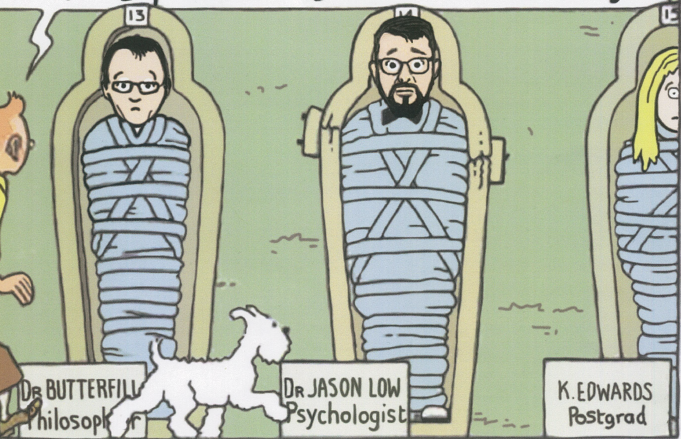
I
a problem for minimal theory of mind
How do agents ever perform optimally when time is pressing and cognitive resources such as working memory are scarce?
Minimal Models Programme—Mindreading
1. construct (or borrow) a model ✓
2. test the model’s signature limits ✓ (but Kampis & Kovács (2022)?)
3. say when each model is used ???
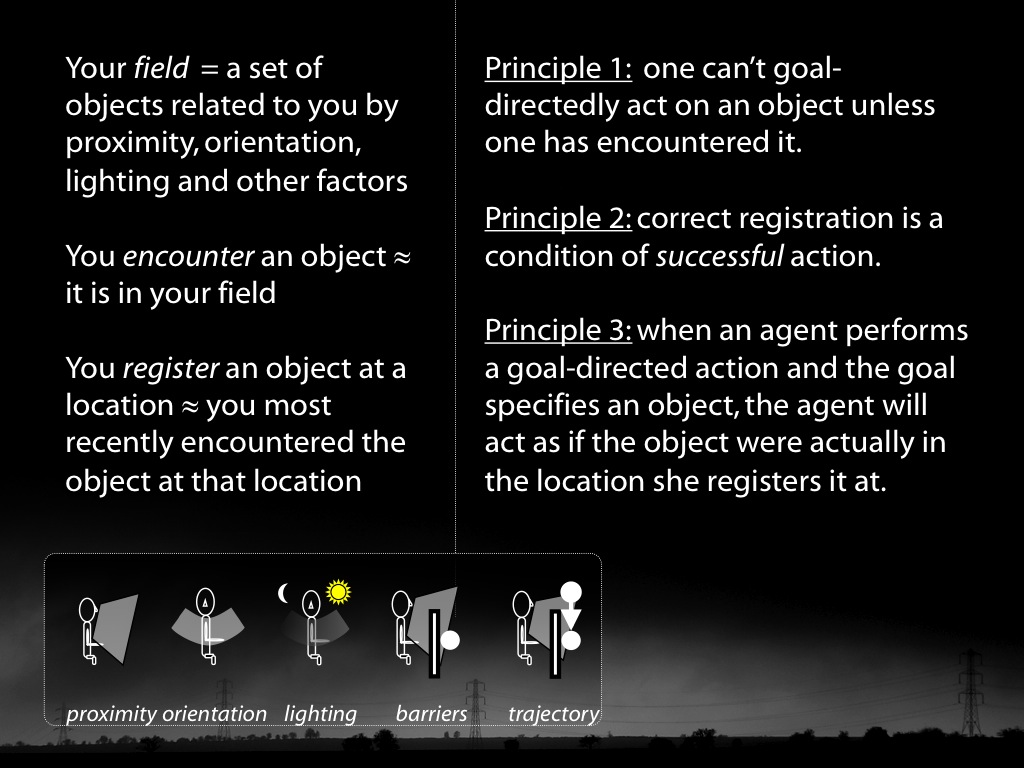
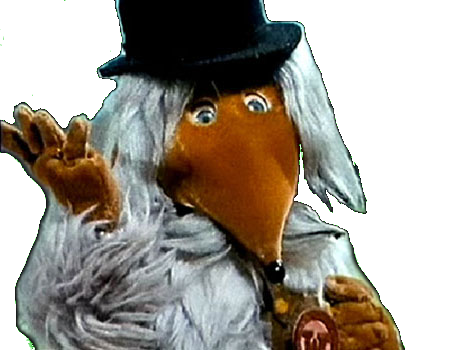
Minimal Models Programme—Mindreading
1. construct (or borrow) a model ✓
2. test the model’s signature limits ✓ (but Kampis & Kovács (2022)?)
3. say when each model is used ???
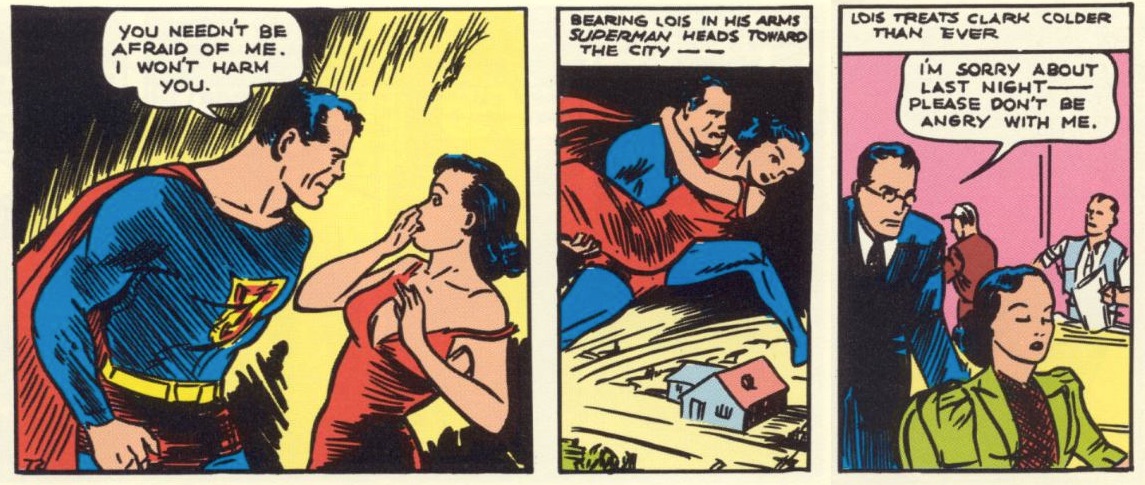
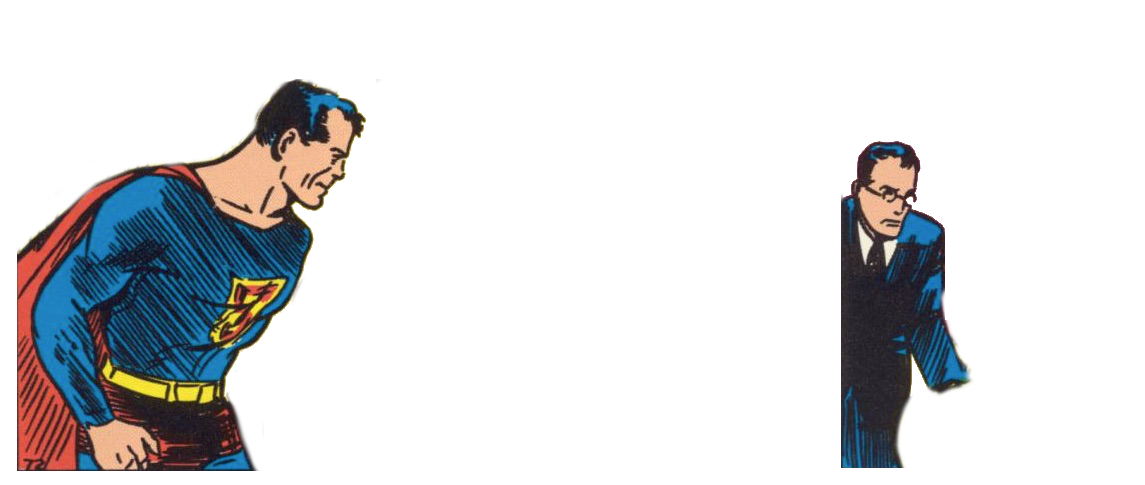
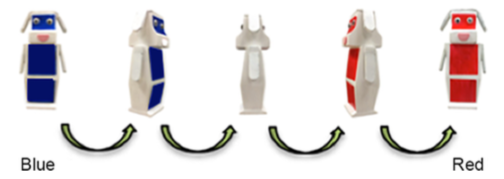
Minimal Models Programme—Mindreading
1. construct (or borrow) a model ✓
2. test the model’s signature limits ✓ (but Kampis & Kovács (2022)?)
3. say when each model is used ???
a. automatic → minimal
b. motor mindreading conjecture: minimal models of mind are implemented motorically
Background
Kovács Effect (Kovács, Téglás, & Endress, 2010)

Low et al. (2020, p. figure 1, part) based on Kovács et al. (2010)

Low et al. (2020, p. figure 1, part) based on Kovács et al. (2010)
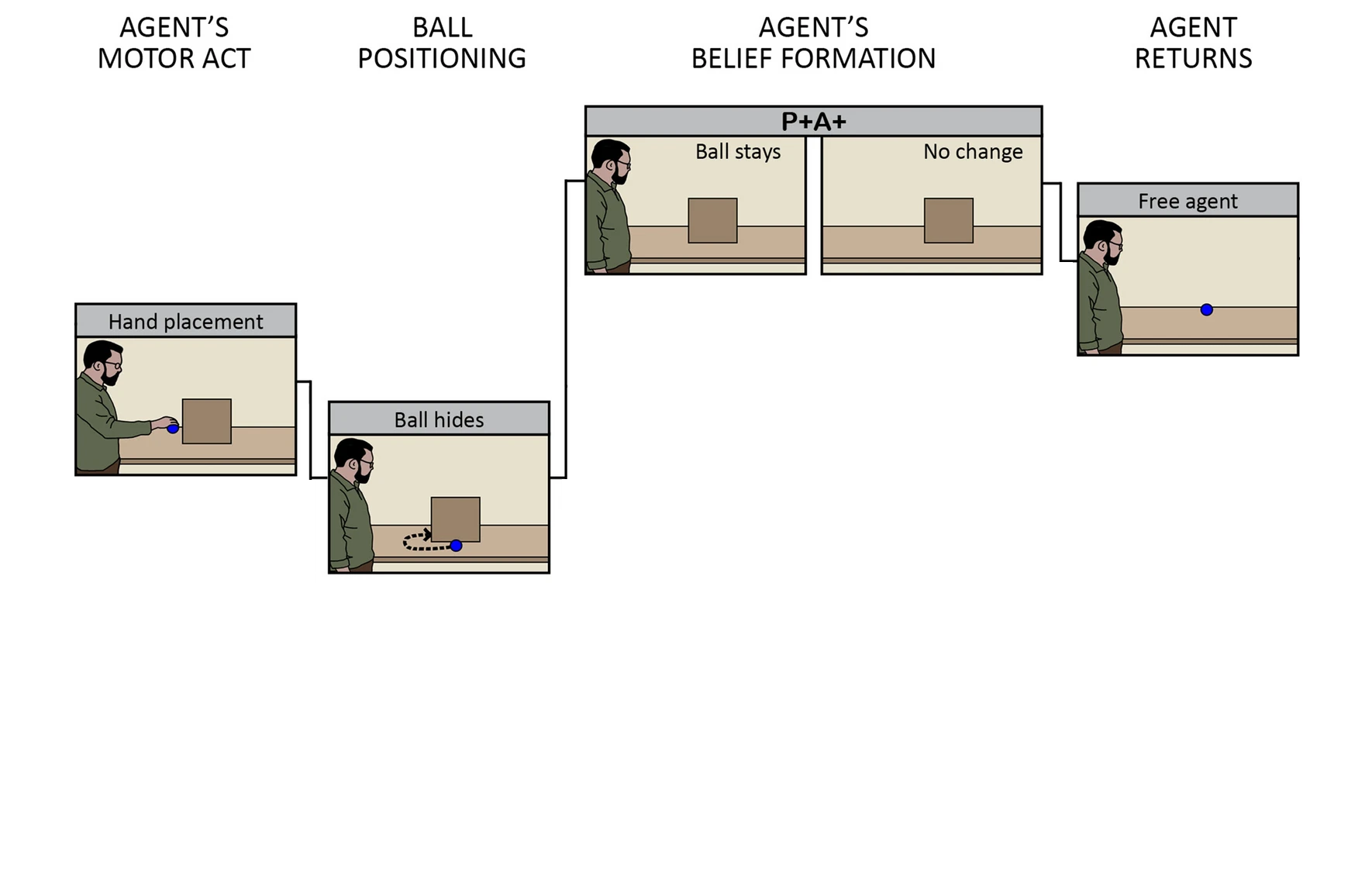
Low et al. (2020, p. figure 1, part) based on Kovács et al. (2010)
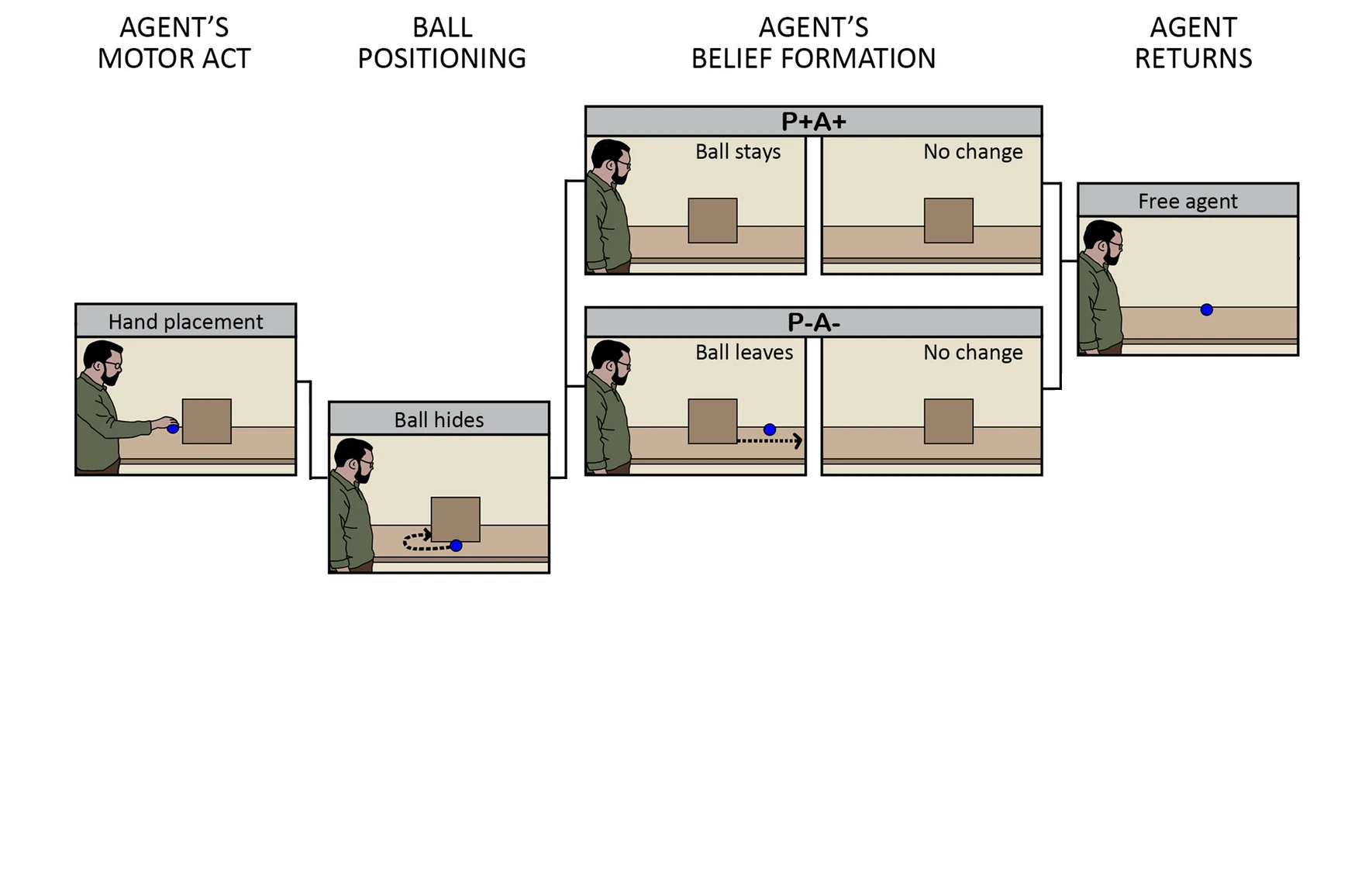
Low et al. (2020, p. figure 1, part) based on Kovács et al. (2010)
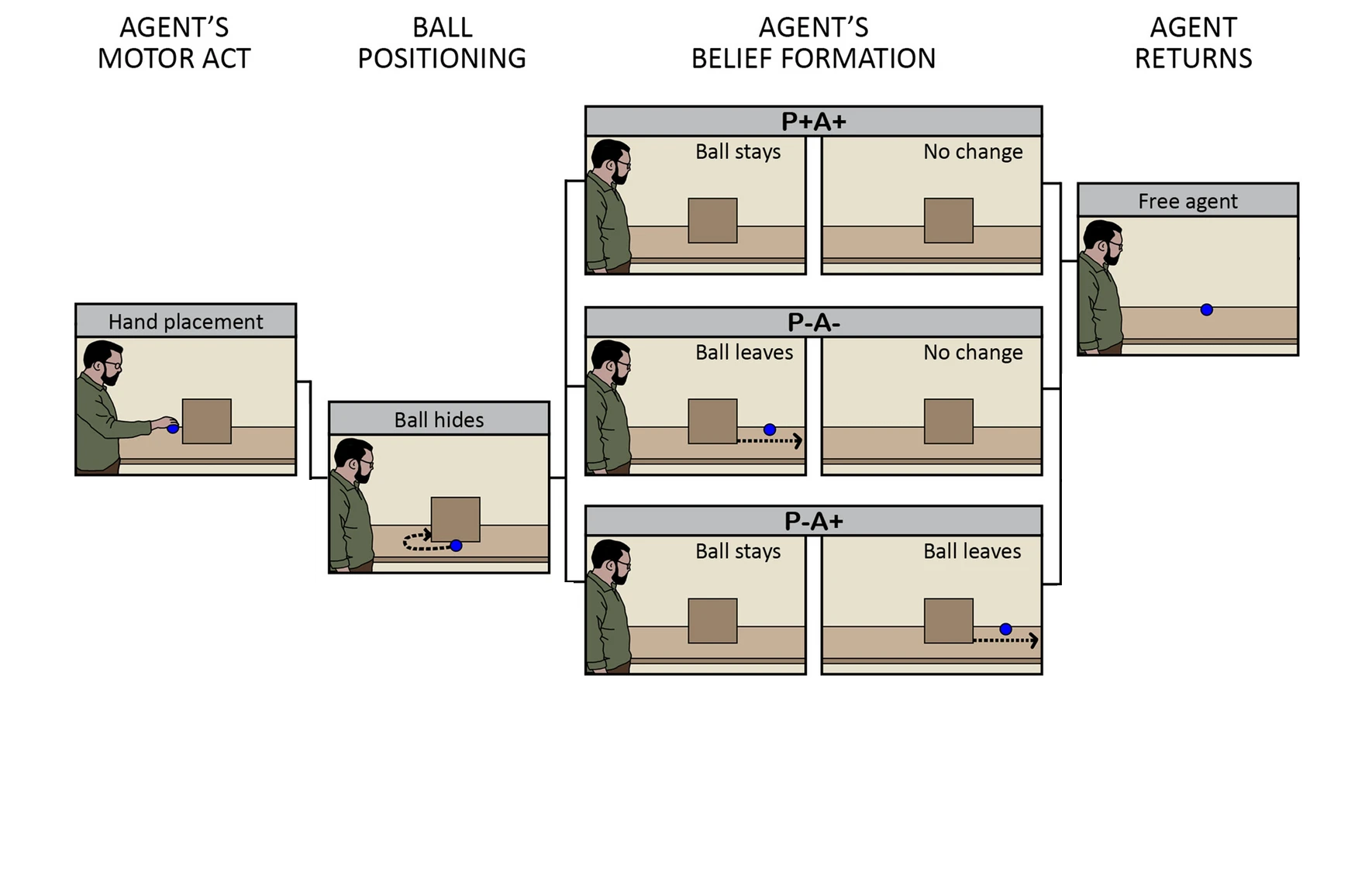
Low et al. (2020, p. figure 1, part) based on Kovács et al. (2010)

Low et al. (2020, p. figure 1, part) based on Kovács et al. (2010)
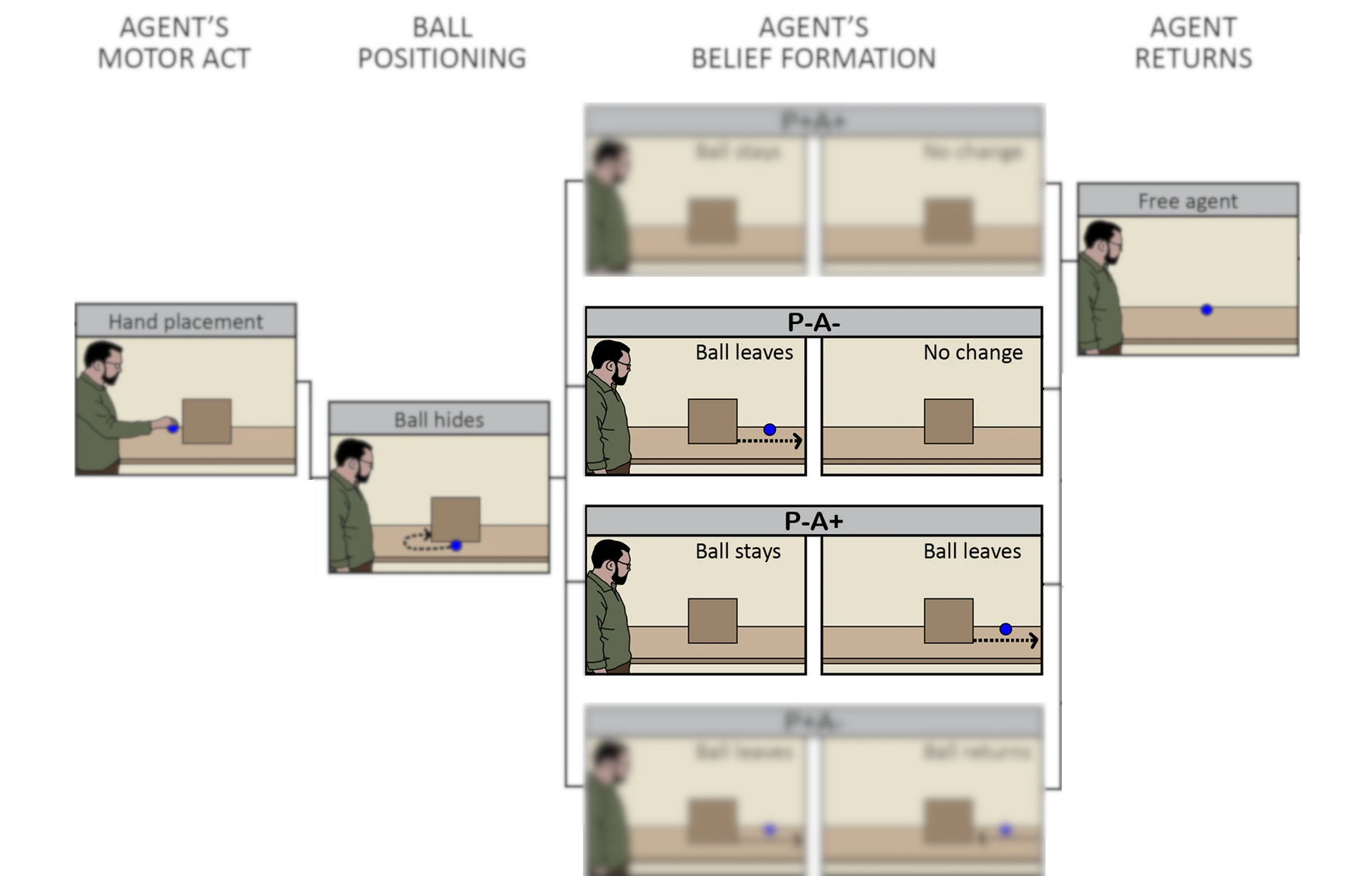
Low et al. (2020, p. figure 1, part) based on Kovács et al. (2010)
Question
Why do others’ false beliefs ever have an effect on your own actions?

Costantini et al, 2010 figure 1b
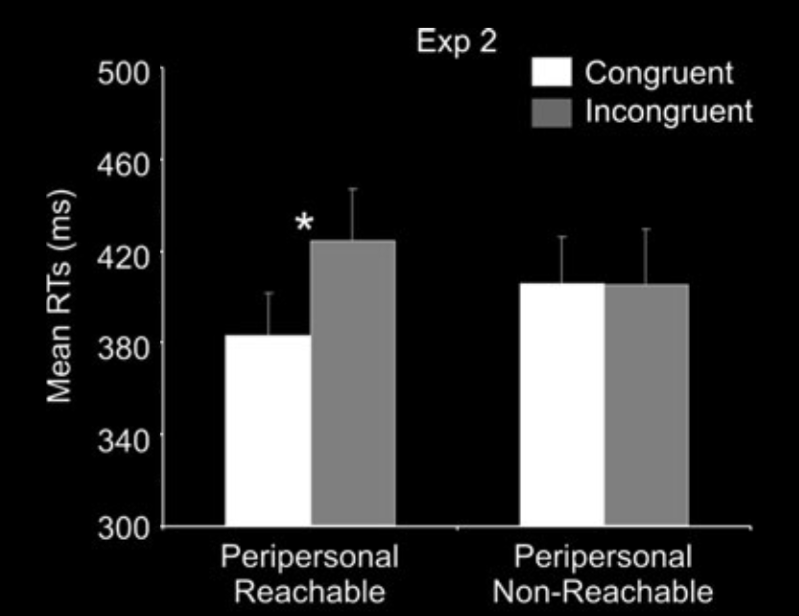
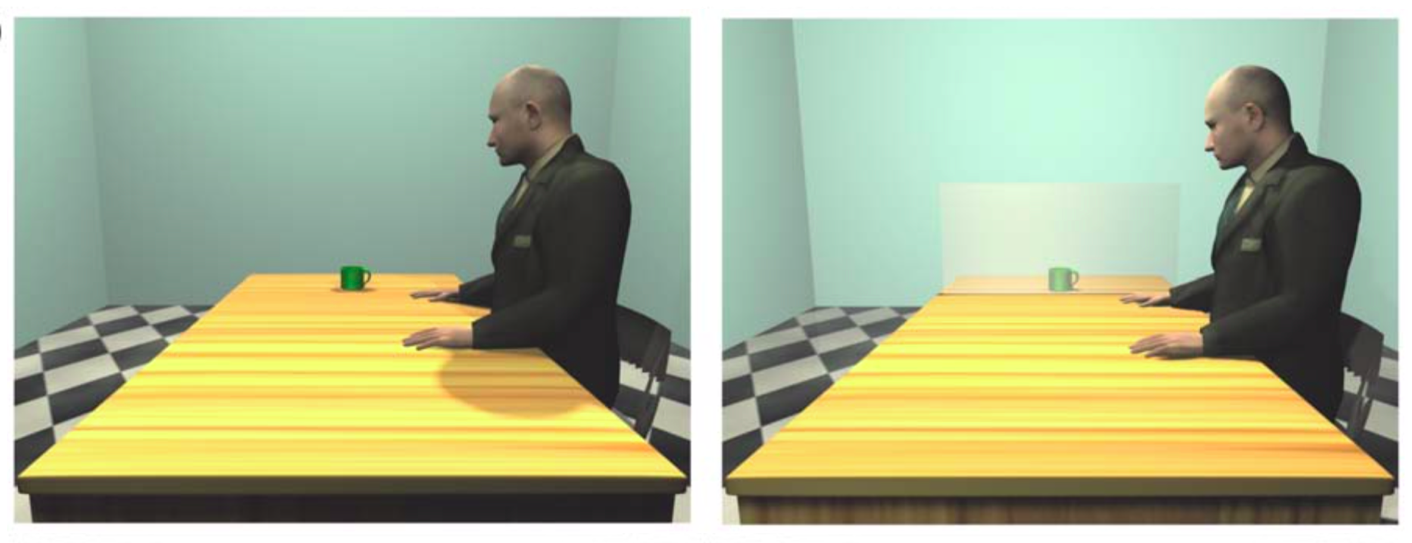
Costantini et al, 2011 figures 3,4
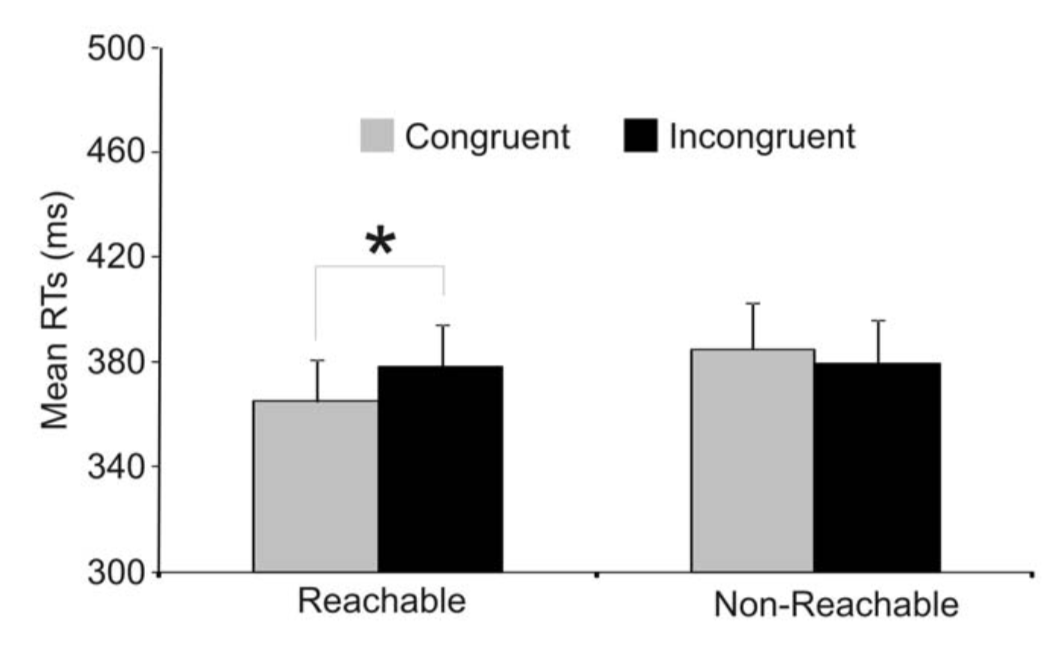
Why do others’ false beliefs ever have an effect on your own actions?





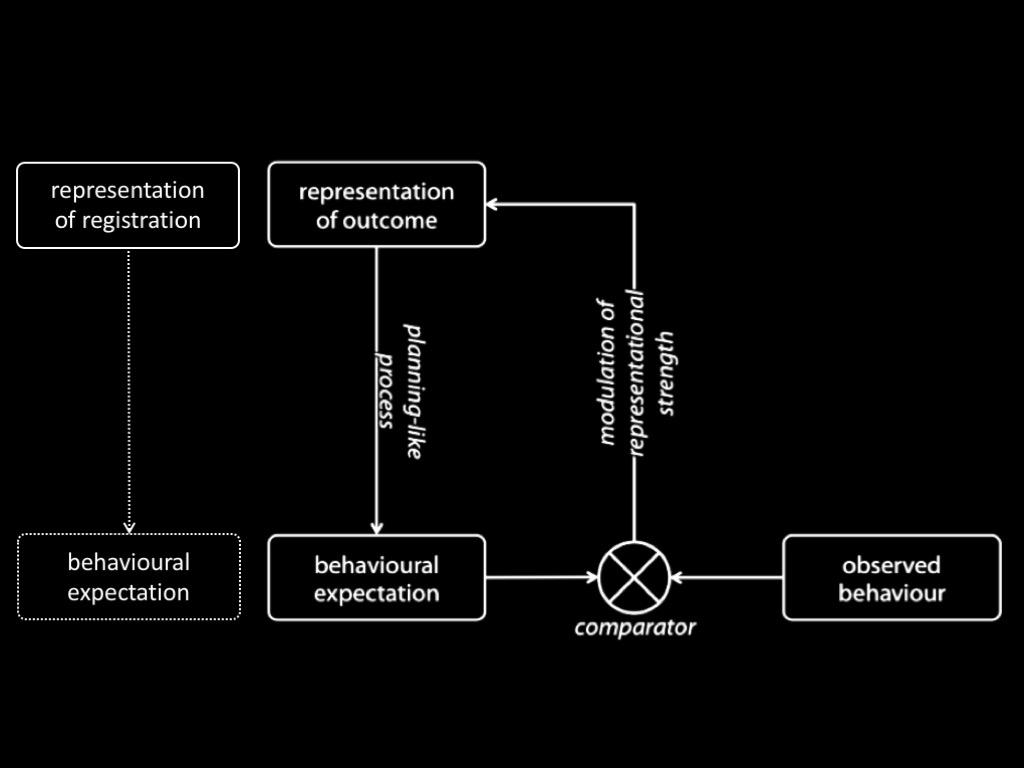
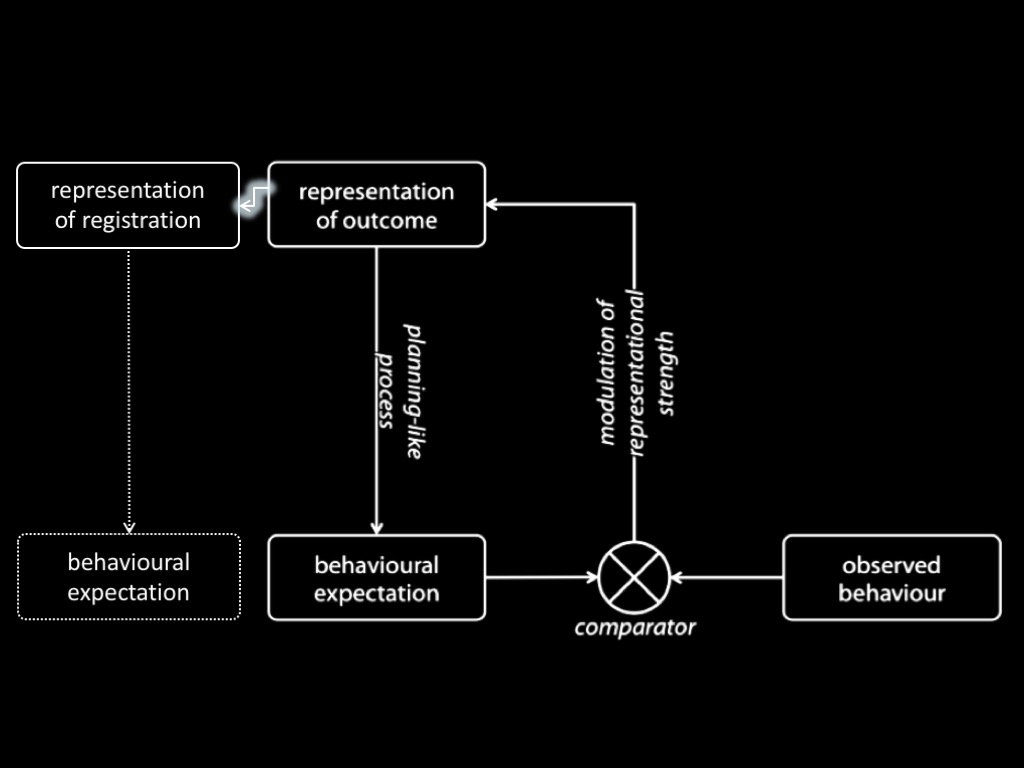
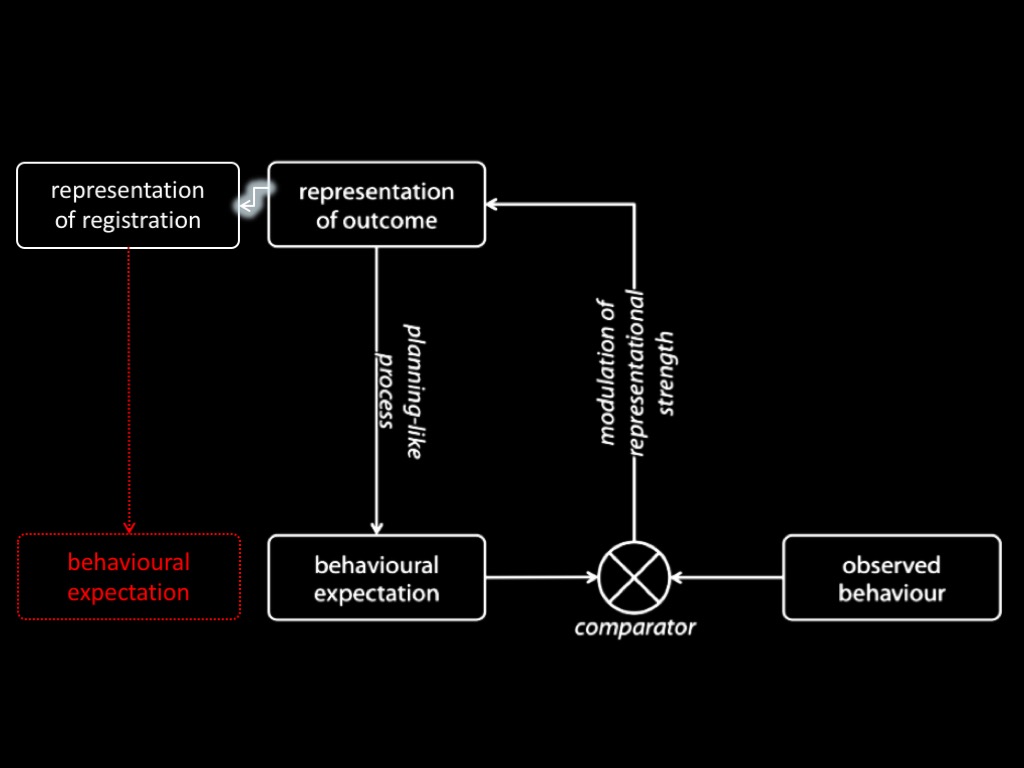
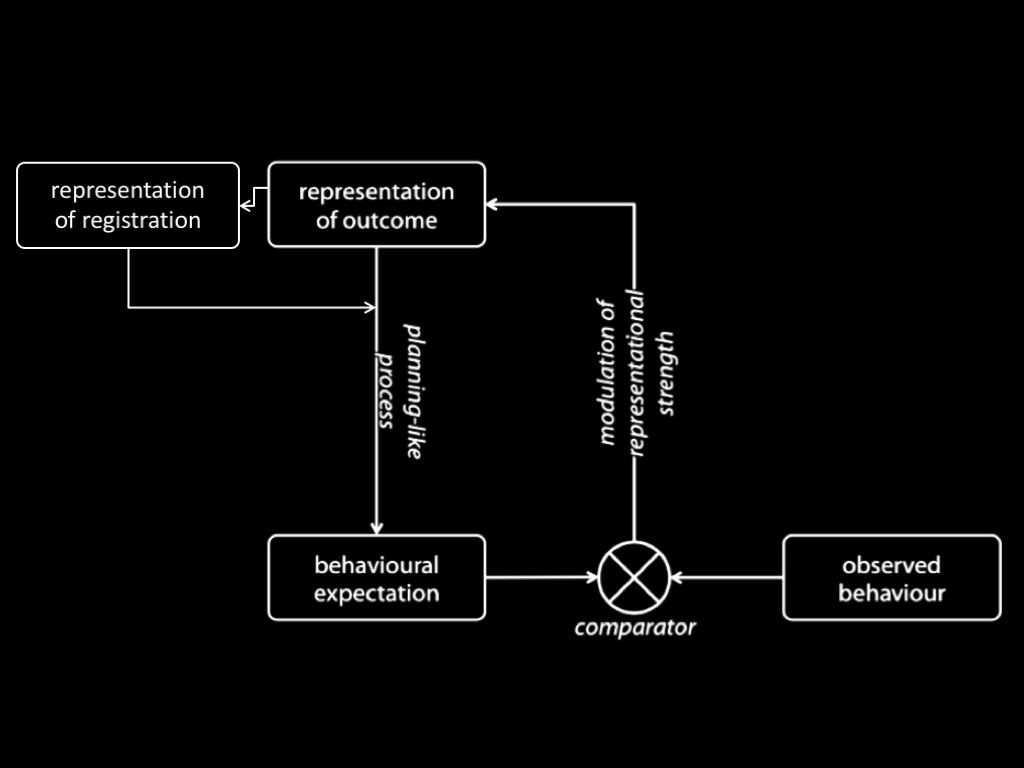
Prediction
In motor mindreading only, physically constraining protagonists (or participants) will impair belief tracking.

Low et al. (2020, p. figure 1, part) based on Kovács et al. (2010)

Low et al. (2020, p. figure 1, part) based on Kovács et al. (2010)
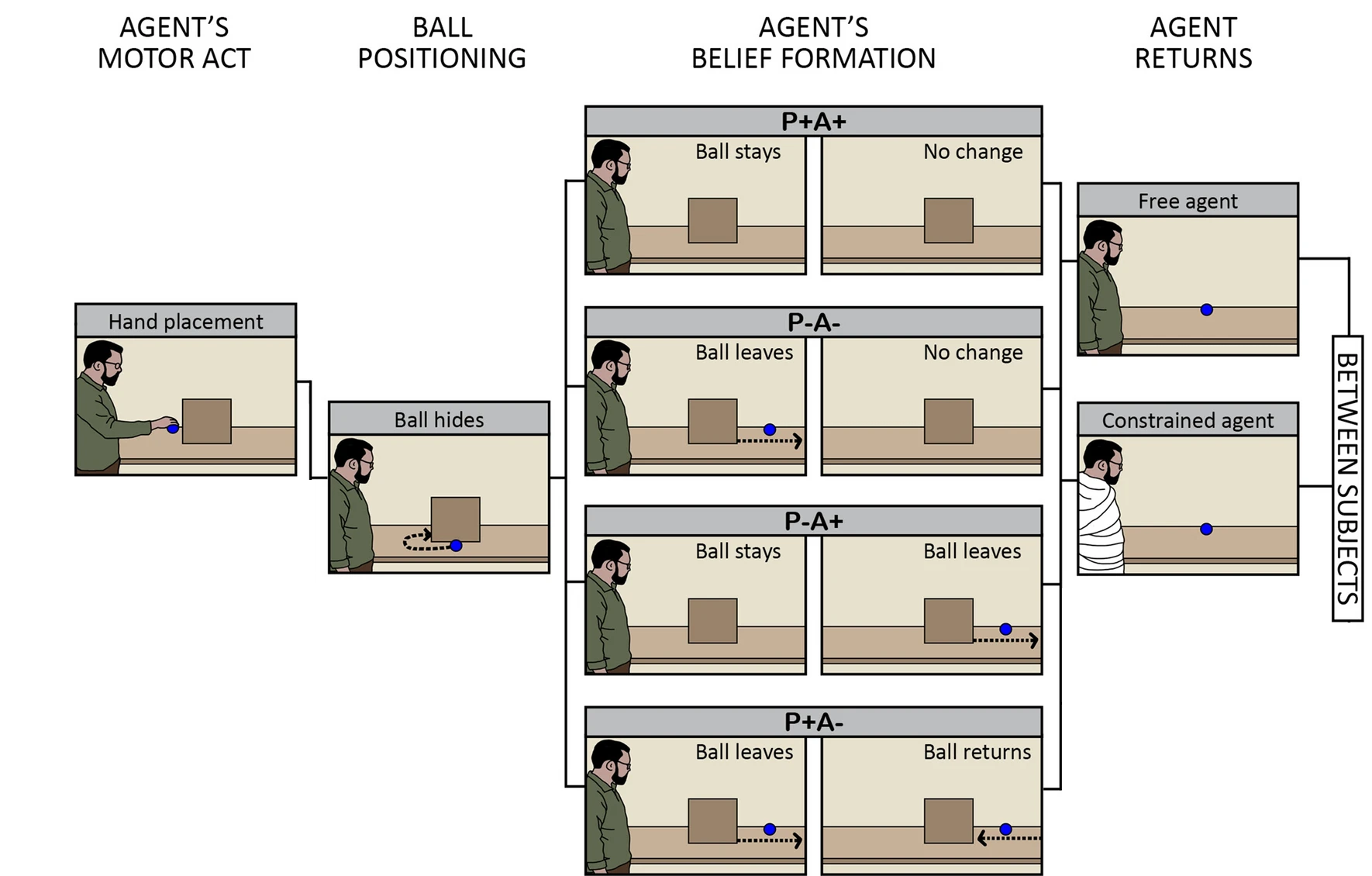
Low et al. (2020, p. figure 1, part) based on Kovács et al. (2010)
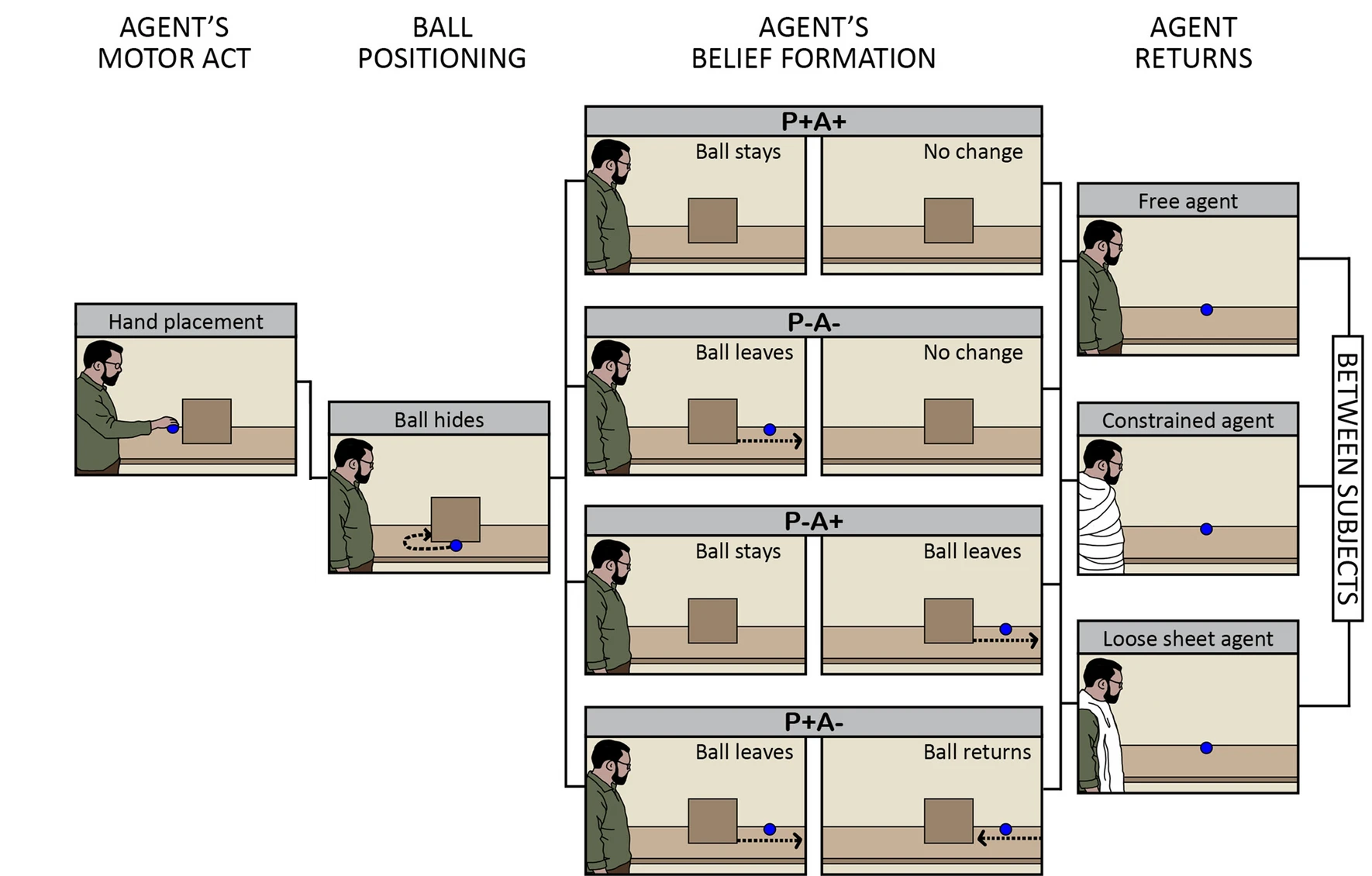
Low et al. (2020, p. figure 1, part) based on Kovács et al. (2010)
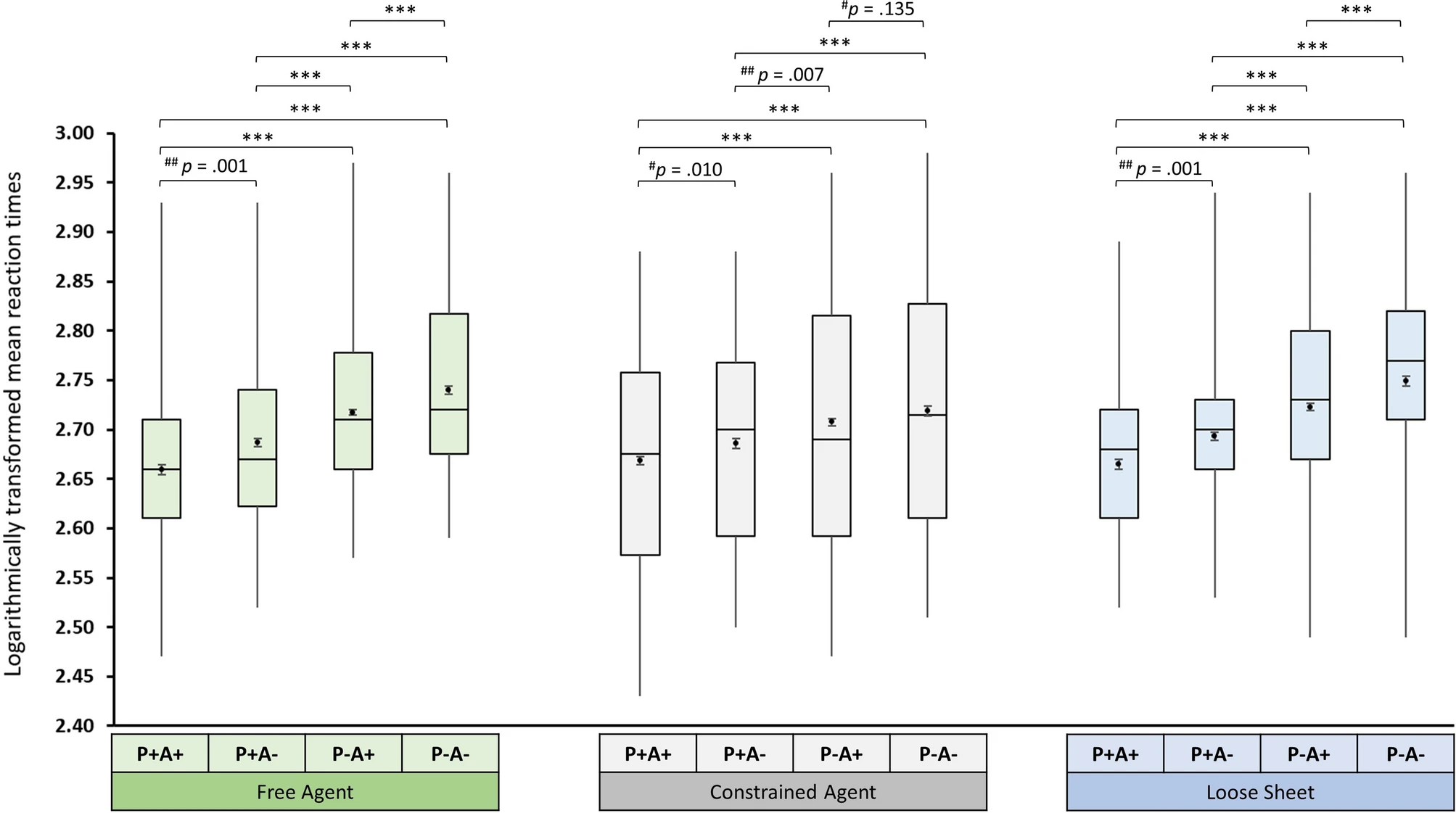


Low et al. (2020, p. figure 2)

Low et al. (2020, p. figure 3)
Prediction
In motor mindreading only, physically constraining protagonists (or participants) will impair belief tracking.
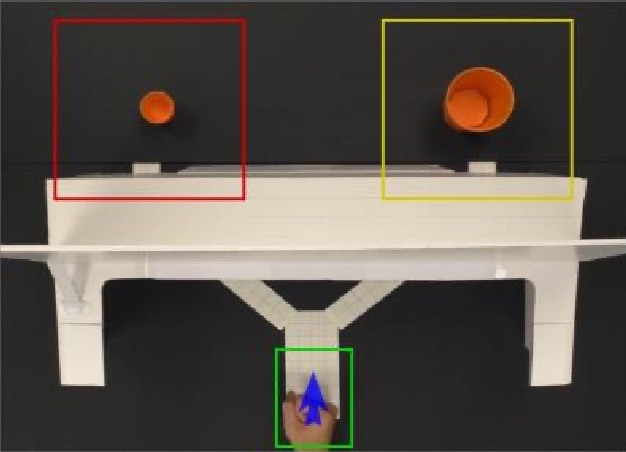
Six (2022, p. figure 11)
Prediction
In motor mindreading only, physically constraining protagonists (or participants) will impair belief tracking.
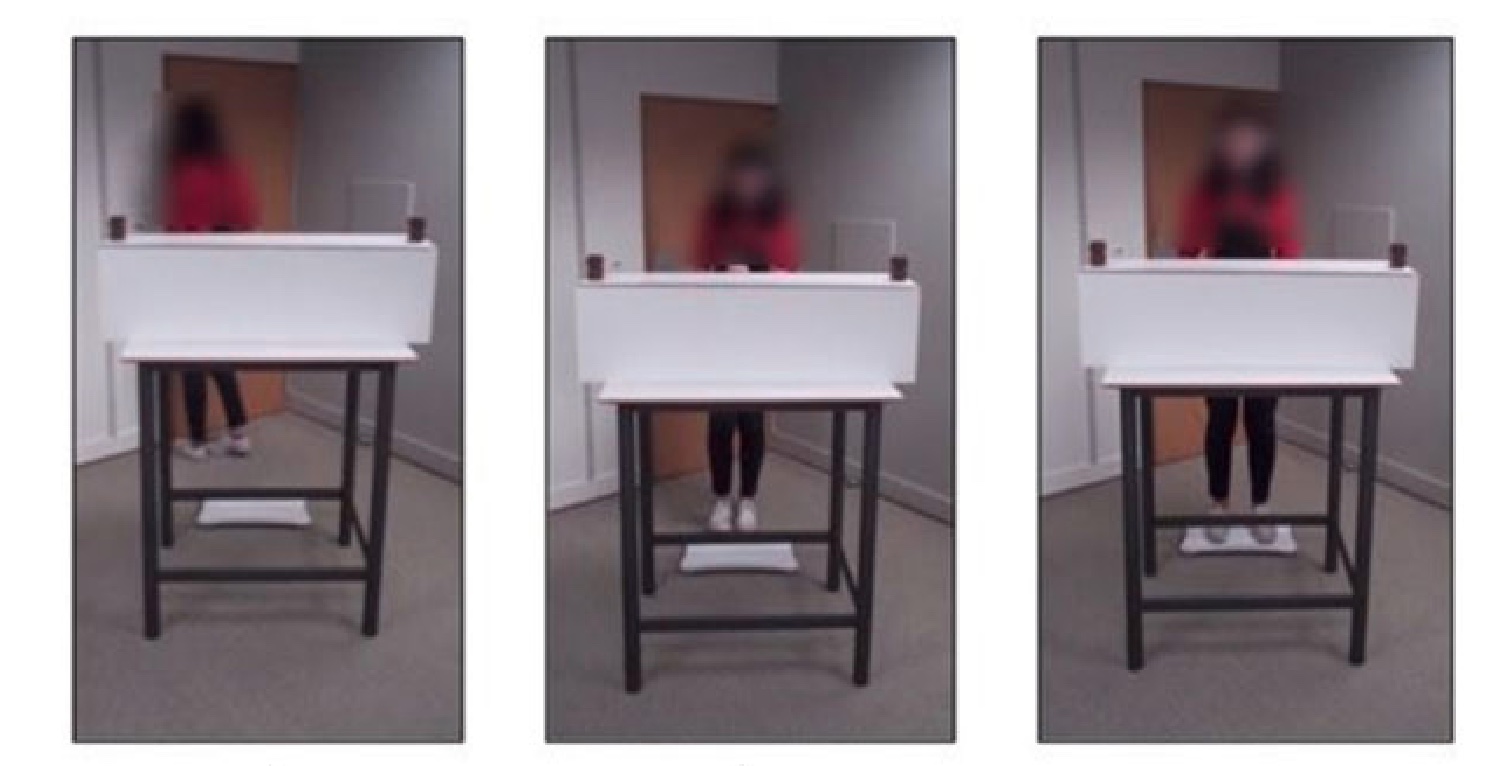
Zani, Butterfill, & Low (2020)
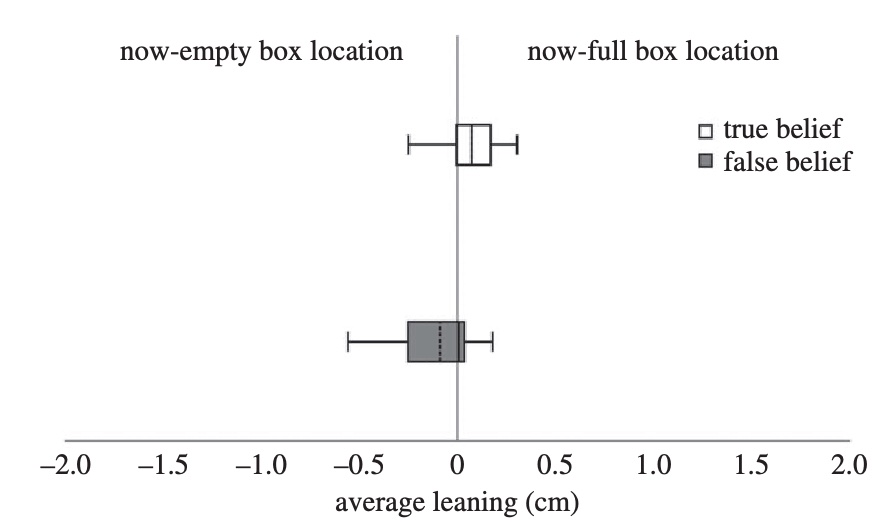
What if we bind the protagonist?

| source | paradigm | measure | who bound? | as predicted? |
| Low &c, 2020 | Kovacs’ Smurf | RT | agent | Y |
| Six, 2022 Exp. 2 | Six’ Cups | looking time | participant | N |
| Zani, forthcoming Exp. 2 | Buttelmann/ helping | leaning | agent | suggestive |
| Pascarelli, Sinigaglia et al in prep | Kovacs’ Smurf | RT | agent | unknown |

How do agents ever perform optimally when time is pressing and cognitive resources such as working memory are scarce?
Minimal Models Programme—Mindreading
1. construct (or borrow) a model ✓
2. test the model’s signature limits ✓ (but Kampis & Kovács (2022)?)
3. say when each model is used ???
a. automatic → minimal
b. motor mindreading conjecture: minimal models of mind are implemented motorically